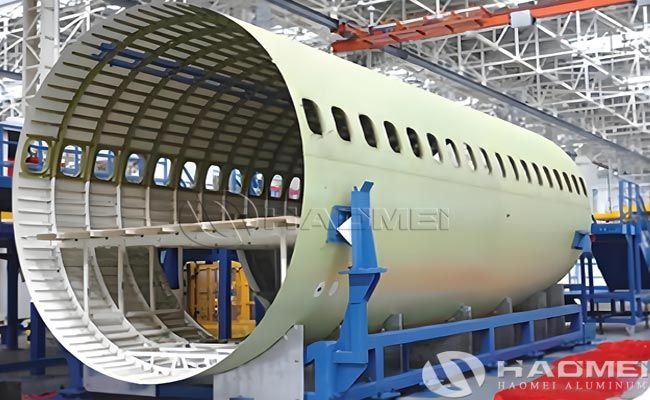
![]() Home > News
Home > News
Source:https://www.aircraft-aluminium.com/a/aircraft-aluminum-sheet-price-list.html
The aircraft aluminum sheet price is affected by many factors, including the type of aluminum alloy, thickness, size, market supply and demand and raw material costs. Generally speaking, the aluminum alloys used in aircraft grade aluminum sheet, such as 2024, 6061, 6082, 7050, 7075, etc., will have different prices.

Here is some basic information about common aircraft aluminum sheet price list:
1. 2024 aircraft aluminum sheet
- Price range:
The US dollar price of aircraft grade 2024-T351 aluminum sheet is usually $4.17–$5.15/kg (approximately $3,800–$4,700/ton). The specific price varies depending on thickness, surface treatment (such as Alclad coating) and order volume.
- Application scenarios:
Mainly used for aircraft structural parts (such as wings, fuselage skins) due to its high strength and good fatigue performance.
2. 6061 aircraft aluminum plate
- Price Range:
Aircraft grade 6061-T6 aluminum plate has a USD price of approximately $3.30–$4.40/kg (approximately $3,000–$4,000/ton). Aerospace-grade requires additional processing and certification, which significantly increases the price.
- Application Scenarios:
General-purpose alloy used for non-critical structural parts, piping, and equipment due to its balanced strength, corrosion resistance, and machinability.
3. 7050 aircraft aluminum plate
- Price Range:
Aerospace-grade 7050-T7451 aluminum plate has a USD price of $4.00–$5.00/kg (approximately $3,800–$4,500/ton). Aerospace-grade requires additional processing, which actually costs more.
- Application Scenarios:
High-strength alloy used for aircraft landing gear and fuselage frames, more corrosion-resistant than 7075 aircraft aluminum plate.
4. 7075 aircraft aluminum plate
- Price range:
The US dollar price of aviation-grade 7075-T651 aluminum plate is about $5.50–$6.60/kg (about $5,000–$6,000/ton). The price of aviation-grade is higher due to certification and processing requirements.
- Application scenarios:
The highest strength aviation aluminum alloy, used for key components such as wing beams and engine brackets.
Key influencing factors of aircraft aluminum sheet price:
- Alloy composition and performance:
7075 aluminum has the highest strength but the highest cost due to its high zinc content (5.1–6.1%); 6061 contains magnesium and silicon, and has outstanding cost performance.
2024 aluminum has a high copper content (3.8–4.9%) and is suitable for high temperature environments, but has poor corrosion resistance and requires Alclad coating.
- Processing technology and certification:
Aircraft grade aluminum sheets require strict heat treatment (such as T6, T73) and surface treatment (such as anodizing), which significantly increases the cost.
Suppliers need to pass aviation certification (such as AMS-QQ-A-250/5), and the certification fee is included in the final price.
- Market supply and demand and regional differences:
The recovery of the global aviation industry in 2024 will boost demand, especially the prices of 7075 and 2024 aluminum alloys will be significantly affected by the rising costs of raw materials (such as aluminum and copper).
The Chinese market quotation is usually lower than that in Europe and the United States. For example, the price of 7050 aircraft aluminum plate is about 20-30% lower than that in Europe and the United States, but transportation and tariff costs need to be considered.
Aircraft aluminum sheets are widely used in the aerospace field, mainly including the following aspects:
- Aircraft structural parts: Aircraft aluminum plates are the main material for manufacturing aircraft skins, frames, wall panels, landing gear and other structural parts. These structural parts need to withstand various forces and moments during flight, so the materials are required to have high strength and good toughness.
- Spacecraft components: In spacecraft, aircraft aluminum plates are also used to manufacture various components, such as satellite structures, rocket bodies, etc. These components need to withstand the huge thrust during launch and the extreme conditions in the space environment.
- Engine components: Although the main components of the engine are usually made of materials such as high-temperature alloys, aircraft aluminum sheets are also used in certain auxiliary components and casings to reduce weight and improve overall performance.